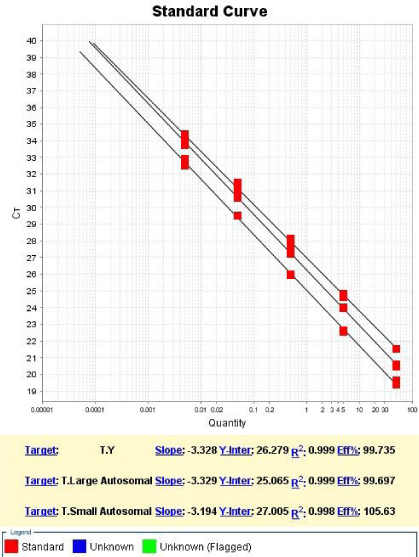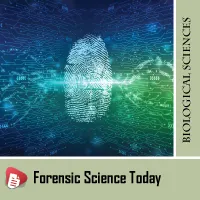Forensic Science Today
Missing Persons Identification: Genetic profiling of highly charred human remains using sixteen STR loci markers
Kofi Adjapong Afrifah1,2* Alexander Badu-Boateng1, Samuel Antwi-Akomeah1, Eva Emefa Motey1, Edward Kofi Abban1, Paul Poku Sampene3, Osei Owusu-Afriyie4 and Augustine Donkor5
2Department of Biochemistry and Biotechnology, Kwame Nkrumah University of Science and Technology (KNUST), Kumasi, Ghana
3Department of Pathology, School of Medicine and Dentistry, Kwame Nkrumah University of Science and Technology (KNUST), Kumasi, Ghana
4Department of Pathology, Ghana Police Hospital, Accra
5Department of Chemistry, College of Basic and Applied Sciences, University of Ghana, Legon, Ghana
Cite this as
Afrifah KA, Boateng AB, Akomeah SA, Motey EE, Abban EK, et al. (2020) Missing Persons Identification: Genetic profiling of highly charred human remains using sixteen STR loci markers. Forensic Sci Today 6(1): 016-019. DOI: 10.17352/fst.000017Introduction
Law enforcement and Disaster Management Agencies within Governments spend substantial resources to identify human remains and dead bodies after wars, mass disasters and political unrest [1-4]. Under certain legal circumstances such as civil paternity cases and unclaimed human cadavers, biological samples may be collected from living relatives and exhumed human remains, as well as mortal remains for DNA profiling purposes [5,6]
In present-day society where socio-cultural dynamics and economic factors encourage migration in search of better living standards, relatives are always looking for missing family members.
In all these cases, DNA analysis is considered the best method of identification. Microsatellite DNA, namely Short Tandem Repeats (STRs) loci show high variability. Degraded DNA from old skeletal remains can be amplified by PCR [7].
Biological materials that are of importance in identifying exhumed remains using DNA are bone, teeth and nail due to their ability to withstand rapid decomposition. According to Vass, et al. [8] tissues such as nails, teeth and bones are more resilient to environmental factors. DNA analysis from skeletal samples has developed rapidly since its inception in the late 1980s.
The two main objectives of forensic DNA analysis are to identify the sources of biological evidence, including associations of persons through kinship, and excluding persons mistakenly linked to some evidence.
The most widely used genetic markers for forensic DNA typing in most crime laboratories are autosomal Short Tandem Repeat (STR) loci [4]. Commercially available STR kits, such as the SGM plus PCR amplification Kit, AmpFℓSTR Identifiler PCR amplification kit (Applied Biosystems, Foster City, California) or the PowerPlex 16 system (Promega, Madison, Wisconsin) make use of a set of 10–17 STR loci to provide a high level of diversity and resolution for identity testing [9]. These kits, and STR loci, have been used widely for the identification of human remains as well as in relationship testing, such as paternity testing and family reconstructions.
We report on how a highly charred human remains were genetically identified after the victim, a female, was reported missing in 2016. Intelligence gathered by Police fourteen months later resulted in the discovery of burnt and buried skeletal remains at a location about 42Km away from her home. Crime scene investigators sampled bones for forensic DNA Analysis since there was no soft tissue. Close relatives of the missing female (alleged son, and alleged mother) were invited for buccal swab sampling for comparative DNA analysis to determine the identity of the human remains.
Materials and methods
Sampling
The following sealed samples were submitted for forensic DNA profiling:
i) Alleged charred human remains of missing person, as shown in Figure 1.
ii) Buccal swabs of missing person’s alleged son.
iii) Buccal swabs of missing person’s alleged mother.
Ethical clearance was obtained from the Ethics committee of The Kwame Nkrumah University of Science and Technology, Kumasi, and informed consent was obtained from the individual Sample providers.
STR amplification and Capillary Electrophoresis
The extracted DNA from the samples were then amplified with the 9700 PCR machine using AmpFLSTRTM IdentifilerTM Plus PCR Amplification Kit (Applied Biosystems, Foster City, CA) following manufacturer’s protocol. The amplified STR targets were electrophoresed in the 3500 Genetic Analyzer (Applied Biosystems, Foster City, CA) and the generated STR profiles were analyzed using GeneMapper IDx version 1.5 software, following manufacturer’s protocol.
Results
The obtained results are shown in Tables 1, 2 and figure 2 respectively.
Discussion and conclusion
The advent of DNA profiling has played a pivotal role in identifying human remains, in criminal investigations, kinship analysis and civil cases [10]. The uniqueness of the DNA molecule to an individual makes it ideal for human identification, especially as the molecule remains highly conserved in a person’s lifetime. An individual is composed of equal amounts of his or her parents’ genetic make-up, and this genetic composition can be analyzed to generate DNA profiles comparable to other DNA profiles of other close family members. An organism’s nuclear DNA molecule is a highly resilient molecule degrades slowly in hard and keratinized tissues such as fingernails, teeth and bones, and can be retrieved and profiled from minimal quantities of crime scene biological samples, such as semen, saliva, urine, bloodstains or single hair with root. These unique qualities of DNA molecule allow it to be retrieved from old crime scene biological samples even when environmental conditions are harsh [9].
Charred human bone samples recovered from crime scenes as well as samples from a variety of highly decomposed human cadavers result in a limited availability of extracted DNA for forensic analysis.
The biology (DNA) unit of the Forensic Science Laboratory at the Criminal Investigation Department of the Ghana Police Service received samples of charred human remains from police investigators after the exhibits were recovered from a crime scene. Buccal swabs of an alleged relative (son) and alleged mother of a missing person were taken at the laboratory for DNA profiling and analysis.
DNA were successfully extracted from the charred human remains and the buccal swabs taken, yielding 0.248ng/µl, 10.742ng/µl and 15.625ng/µl as shown in Table 1. The concentration of DNA recovered were enough to generate full DNA profiles for relationship testing. The successful recovery of DNA from charred human remains agrees with the results of [6,11], in which the authors independently demonstrated that it was viable to recover substantial levels of endogenous DNA for forensic identification by targeting the cochlear region of the petrous bone and femur bones for cases in which there is extensive degradation to hard tissues of human skeletal remains.
Full DNA profiles were also obtained for the alleged family members (alleged mother of missing person and alleged son of missing person) and the skeletal remains for relationship testing. Assuming a prior probability of 0.5 (or 50), the applicable combined maternity Indexes were calculated to be 6.925x104 for the alleged mother of missing person, and 2.088x104 for the alleged son of missing person. The percentage probabilities of stated relationships are 99.999% and 99.995%, respectively, using published population data [12] and DNA View software [13]. This means the observed DNA profile was 6.925x104 times more likely to occur under the scenario that the deceased is the true biological daughter of living relative (mother), as opposed to the scenario that the deceased is an unrelated person of the Sub-Saharan African population [12] to the living relative (mother). With a confidence probability of 99.999%, the conclusion is based on the calculated allele frequency of the DNA profile being rarer in unrelated individuals of the sub-Saharan African population.
Comparative genetic analysis of the charred human remains and the alleged son also yielded a combined maternity Index of 2.088 x 104. The percentage probability of stated relationship was 99.995%, using published population data [12] and DNA View software [13]. The observed DNA profile was 6.925x104 times more likely to occur under the scenario that the deceased is the true biological mother of the living relative (son), as opposed to the scenario that the deceased is an unrelated person of the Sub-Saharan African population [12] to the living relative (son). With a calculated confidence probability of 99.995%, the conclusion is based on the calculated allele frequency of the DNA profile being rarer in unrelated individuals of the sub-Saharan African population.
The results of the genetic profiling and the relationship testing enabled the police detectives solve a cold case involving the brutal homicide of a young female, returned the remains to the family for burial and bring closure to the case to the family.
The authors wish to thank the Investigators from Bono Region for providing the samples, and the staff of the forensic science Laboratory for their support.
- Corach D, Sala A, Penacino G, Iannuci N, Bernardi P, et al. (1997) Additional approaches to DNA typing of skeletal remains: the search for “missing” persons killed during the last dictatorship in Argentina. Electrophoresis 18: 1608-1612. Link: https://bit.ly/35yiDTh
- Lorente JA, Entrada C, Alvarez C, Arce B, Heinrichs B, et al. (2001) Identification of missing persons: the Spanish “Phoenix” Program. Croat Med J 42: 267-270. Link: https://bit.ly/3di1EHj
- Olaisen B, Stenersen M, Mevag B (1997) Identification by DNA analysis of the victims of the August 1996 Spitsbergen civil aircraft disaster. Nat Genet 15: 402-405. Link: https://bit.ly/3deHBJO
- Primorac D, Andelinovic S, Defini-Gojanovic M, Drmic I, Rezic B, et al. (1996) Identification of war victims from mass graves in Croatia, Bosnia, and Herzegovina by the use of standard forensic methods and DNA typing. J Forensic Sci 41: 891-894. Link: https://bit.ly/3fdZyKi
- Afrifah KA, Badu-Boateng A, Antwi-Akomeah S, Motey EE, Boampong E, et al. (2020) Forensic identification of missing persons using DNA from surviving relatives and femur bone retrieved from salty environment. J Forensic Sci Med 6: 40-44. Link: https://bit.ly/3dhZdo4
- Jeffreys AJ, Brookfield JFY, Semeonoff R (1985) Positive identification of an immigration test case using human DNA fingerprints. Nature 317: 818-819. Link: https://bit.ly/2A0Xo0D
- Drobnic K (2001) PCR Analysis of DNA from Skeletal Remains in Crime Investigation Cases. In Problems of Forensic Science, Special issue: Second European Academy of Forensic Science Meeting, Cracow 46: 110-115. Link: https://bit.ly/3aYaxnW
- Vass AA, Fleming RI, Harbison S, Curran JM, Williams E (2013) Evaluating the Use of DNA and RNA Degradation for Estimating the Post-Mortem Interval. US Department of justice. Link: https://bit.ly/3c6zwqz
- ICRC (2009). Missing people, DNA analysis and identification of human remains: A guide to best practice in armed conflicts and other situations of armed violence. 2nd edition 15-25. Link: https://bit.ly/2KYtNqD
- Badu-Boateng A, Twumasi P, Salifu SP, Afrifah KA (2018) A comparative study of different laboratory storage conditions for enhanced DNA analysis of crime scene soil-blood mixed sample. Forensic Sci Int 292: 97-109. Link: https://bit.ly/3fuQ11M
- Gaudio D, Fernandes DM, Schmidt R, Cheronet O, Mazzarelli D, et al. (2019) Genome-Wide DNA from degraded petrous bones and the assessment of sex and probable geographic origins of forensic cases. Sci Rep 9: 8226. Link: https://go.nature.com/2WGe5Gk
- Hares DR (2015) Selection and Implementation of Expanded CODIS Core Loci in the United States. Forensic Sci Int Genet Volume 17: 33-34. Link: https://bit.ly/2WtBEln
- Brenner CH (2019) Likelihood Ratios for Paternity Situations.
- Burger J, Hummel S, Herrmann B, Henke W (1999) DNA preservation: a microsatellite-DNA study on ancient skeletal remains. Electrophoresis 20: 1722-1728. Link: https://bit.ly/2W3HT0j
Article Alerts
Subscribe to our articles alerts and stay tuned.
 This work is licensed under a Creative Commons Attribution 4.0 International License.
This work is licensed under a Creative Commons Attribution 4.0 International License.



 Save to Mendeley
Save to Mendeley
